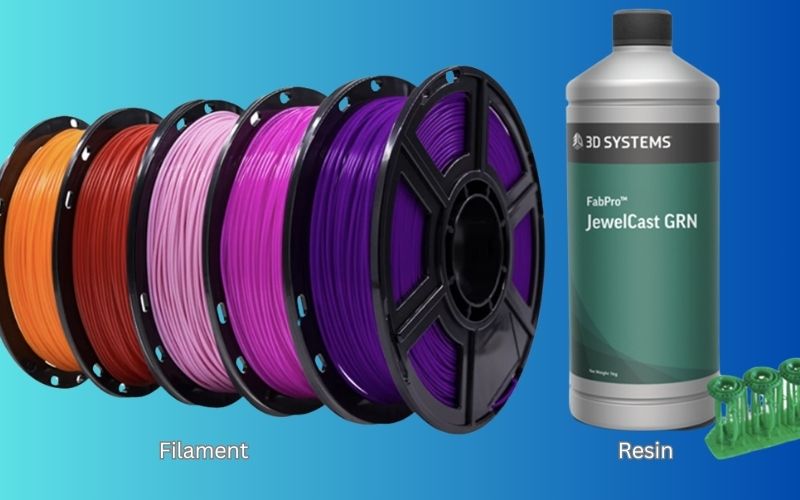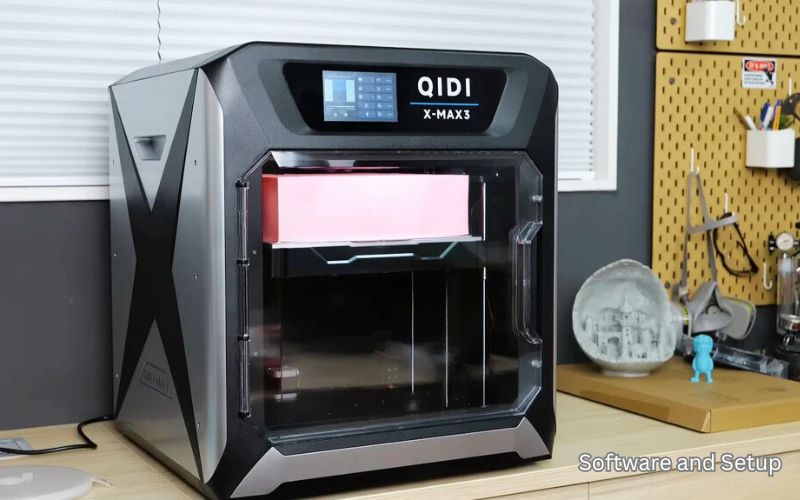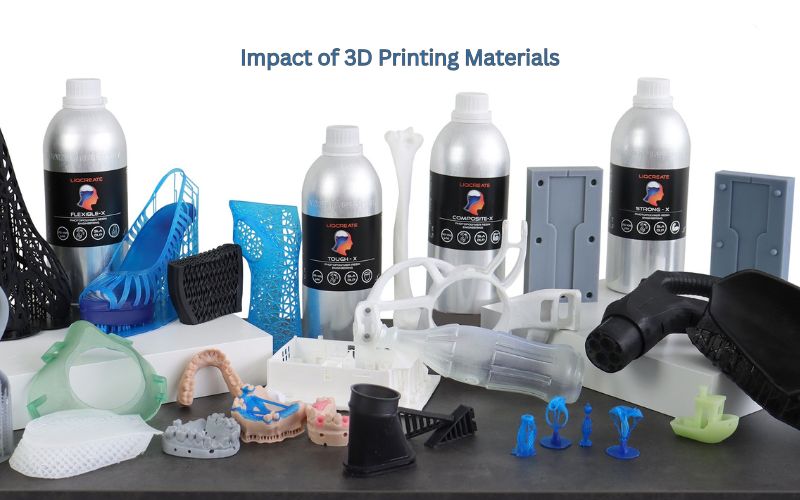3D Printer Resin vs. Filament: Choosing Between Resin and Filament for 3D Printing. Here are your options. By 2024, the global 3D printing Market is projected to reach $24.8 billion, making it a wise investment.
Resin printers deliver detailed designs with high precision and smooth finishes, while filament printers create larger and more durable parts. The advantage of 3D printing is that it is easy and convenient to use for any specific project.

Understanding 3D Printing Technologies
What is Filament 3D Printing?
Using FDM or filament 3D printing, plastic filament is extruded through a hot nozzle, assembling the object layer-by-layer. Think of it like using a glue gun, except with much better results.
Explanation of Fused Deposition Modeling (FDM)
The FDM process involves melting filament, which then comes out of the printer’s nozzle, cools, and forms a shape. This process continues until the entire structure is formed. It’s straightforward, making it perfect for beginners or anyone using the best 3D printer for small business setups that rely on ease and reliability.
Common Uses and Benefits
The advantages of filament 3D printing are the affordability and reliable results. It can be used to make large parts such as mechanical components, models, or household items. In addition to being versatile for many assignments, FDM can utilize a wide variety of materials. It is an excellent personal and professional option.
What is Resin 3D Printing?
In resin 3D printing, a liquid resin is used to create 3D objects. The resin is cured with light in a continuous process, using several thin coats added one after another.
An SLA printer uses a UV laser to target specific points within a thick resin bath, creating shapes in the liquid that form smoother and more detailed prints. For large parts or complex designs, it is ideal.
DLP uses a projector to mix images of layers. One of its advantages is that it is not as slow as SLA. It is ideal for rapid and precise parts, such as dental parts. If you’re looking to make money from a 3D printer, DLP is a wise choice for producing detailed, high-value prints quickly.
As a result, resin printing provides a smooth finish even when complex geometries are used. It is used for medical implants as well as artistic works.

Comparing Print Quality and Detail
Filament 3D Printing Quality
In 3D printing with filaments (Fused Deposition Modeling – FDM), the primary drawback is that the surface finish typically exhibits visible layer lines, which can be sanded down. 0.4 mm is a standard nozzle size, which limits overall resolution, but because of their improved detail, smaller nozzles take longer to print.
The filament prints are pretty strong and rigid. For instance, materials such as ABS and PETG prints are robust enough for functional parts. There is a wide range of materials available, from basic PLA to advanced carbon fiber composites. For enthusiasts and professionals alike, filament printing is perfect for producing significant, solid components.
Resin 3D Printing Quality
In resin 3D printing, the resin forms a liquid and is layered, then cured with ultraviolet light, resulting in an excellent and smooth edge with intricate details. As such, resin 3D printing is ideal for tiny intricate designs like jewelry and miniatures, as it produces minimal layer lines. With layers thinner than 25 microns, resin printers are only capable of creating highly detailed designs.
The majority of resin prints are brittle, but specialty resins can make them stronger. These resins impart strength and flexibility. To broaden the scope of resin 3D printing, users must select the type of resin that best suits their needs. By doing so, users can produce stronger prints.
Comparative Table: 3D Printer Resin vs Filament
| Aspect | 3D Printer Resin | 3D Printer Filament |
| Print Quality | High resolution and smooth surface finish | Good resolution with visible layer lines |
| Cost | Higher initial cost and material expense | Generally, a lower cost for both the printer and the materials |
| Ease of Use | Requires careful handling and post-processing | Easier setup and maintenance |
| Material Options | Limited, with specialized resins for durability | Wide variety, including PLA, ABS, PETG, and more |
| Typical Applications | Ideal for detailed models, miniatures, and prototypes | Best for functional parts and larger projects |
This table quickly compares the main differences between resin and filament 3D printers, making it easier to decide which is right for your needs.
Practical Considerations for 3D Printing
Build Volume and Printing Speed
A filament printer can print large parts and models, offering a better workspace for multiple parts compared to its resin counterpart.
Printing resin is more compact, making it ideal for creating small, intricate models, such as small sculptures or fine details.
In general, filament printers take longer to print a design. However, a design’s print speed is determined by the machine’s core settings. Faster prints correlate with thicker layers and less detail. For finer details, F P is more timed. The layers cure quickly; however, resin prints require additional curing.
In this case, filament will be useful when preparing large-scale parts or models. The resin will be helpful when printing intricate details or fine work.
Ease of Use and Maintenance
A filament printer is simple to use, making it ideal for new users. It is easy to switch filaments, and the setup takes only a few minutes.
Wear gloves and masks while handling liquid resins. Wait times are long due to the procurement process, replacement, and cleaning of parts.
Good ventilation in the workspace is a must. There is toxicity present in resin. Therefore, protective clothing must be worn. Generally, filament printers are safer.
With filament printers, you do not need much attention. With resin printers, you do. You choose what suits your level.

Software and Setup Complexity
Filament Printers
A filament printer is simple to use, making it ideal for new users. It is easy to switch filaments, and the setup takes only a few minutes.
Wear gloves and masks while handling liquid resins. Wait times are long due to the procurement process, replacement, and cleaning of parts.
Good ventilation in the workspace is a must. There is toxicity present in resin. Therefore, protective clothing must be worn. Generally, filament printers are safer.
With filament printers, you do not need much attention. With resin printers, you do. You choose what suits your level.
Resin Printers
It is easy to set up and use a resin 3D printer. The application software is not difficult to navigate. Applications such as Lychee Slicer and Chitubox facilitate the modeling process. Since many printers already offer these options, there is no need to customize them.
Due to their modular design, resin printers have most of their parts pre-assembled. There are several basic steps to begin printing. Support for automatic leveling optimizes the configuration process. Some printers come with instructions or videos to help people get started.
The process of producing 3D prints with resin printers is entirely unproblematic and offers high accuracy.
Pros and Cons Summary
Filament 3D Printing
There are several desirable advantages to FDM technology, also known as filament 3D printing.
Pros:
Durability: The strength and durability of prints make them ideal for parts that must withstand heavy use.
Cost-Effectiveness: Given the relatively low cost of filament printers and materials, printing multiple objects is also cost-effective.
Large Build Volume: Printing large objects at once is helpful for large projects.
Cons:
Visible Layer Lines: The final print may contain visible lines, which require some work to remove.
Maintenance: Filament printers require regular maintenance, just like any other tool. Everything from cleaning to replacing parts is time-consuming.
In summary, filament printing is cost-effective and durable, although maintenance will be necessary.
Resin 3D Printing
Resin 3D printing excels at detailed work. Here are some of its main advantages and disadvantages:
Pros:
High Resolution: Jewelry and miniatures can be crafted using resin printers. They achieve incredible levels of detail.
Smooth Finish: A professional finish can be achieved with less effort because the prints appear shiny and well-polished.
Cons:
Smaller Build Volume: These printers are typically suited for smaller projects. Bulky materials would not be suitable for these printers.
Toxic Materials: Wear safety gloves and masks when handling liquid resin to prevent potential hazards.
Take your time and be selective according to your needs when it comes to resin 3D printing. It offers excellent resolution, but volume and safety concerns may limit its application.

Unique Topics to Add Value
Environmental Impact of 3D Printing Materials
It is suitable for the environment. 3D printing uses filaments and resins. PLA filament is derived from corn, making it a renewable and biodegradable resource.
Using recycled filaments reduces the amount of waste going to landfills and conserves resources.
The resin industry is also improving. Plant-based resins are less toxic, but recycling them remains difficult. It isn’t very easy to repurpose.
Printers that reuse end materials are efficient and minimize waste, helping the environment.
Material choice is crucial for sustainable practices in 3D printing. It is essential to choose materials that are non-toxic and cheap.
Future Trends in 3D Printing Materials
As 3D printing materials continue to develop, new polymers and composites with elasticity, conductivity, and biocompatibility are appearing.
Aerospace utilizes these materials for weight reduction and to create robust components, while medicine employs them in manufacturing specialized implants. The construction industry also benefits. They reduce waste and enable creativity.
The use of artificial intelligence (AI) and automation will increase the progress of 3D printing materials, as well as enhance creativity in many sectors.
Wrapping Up
Both resins and filaments have their advantages and disadvantages, so it really depends on what you need. A resin printout produces a lot of detail and a smooth finish, making it ideal for intricate designs. However, resin is expensive and requires careful handling.
On the other hand, filament is highly durable, easy to work with, and cost-effective, which makes it perfect for significant components. Select based on the type of project, budget, and details required for production. For more information, select resin; for budget and strength considerations, choose filament.
What Destinations Do You Offer?
Resin printing (SLA / MSLA / DLP) excels at fine detail and ultra-smooth surfaces, with virtually invisible layer lines.
Which produces stronger, more durable parts?
Filament printing tends to produce stronger and more durable parts, especially for functional use, compared to standard resin prints, which can be brittle.
Is resin or filament more beginner-friendly?
Filament printing is generally more beginner-friendly—less messy, simpler post-processing, and fewer safety concerns. Resin printing demands more careful handling, cleaning, and curing.
Which has lower ongoing costs?
Filament printing is typically cheaper in terms of material costs and maintenance. Resin requires more supplies (resin, cleaning agents, curing gear), making it more expensive over time.
When should I choose resin over filament (and vice versa)?
Use resin when you need high precision, small models, miniatures, jewelry, or detailed prototypes. Use filament for larger, functional parts, prototypes, or where durability and cost-efficiency are key.

Comments are closed.